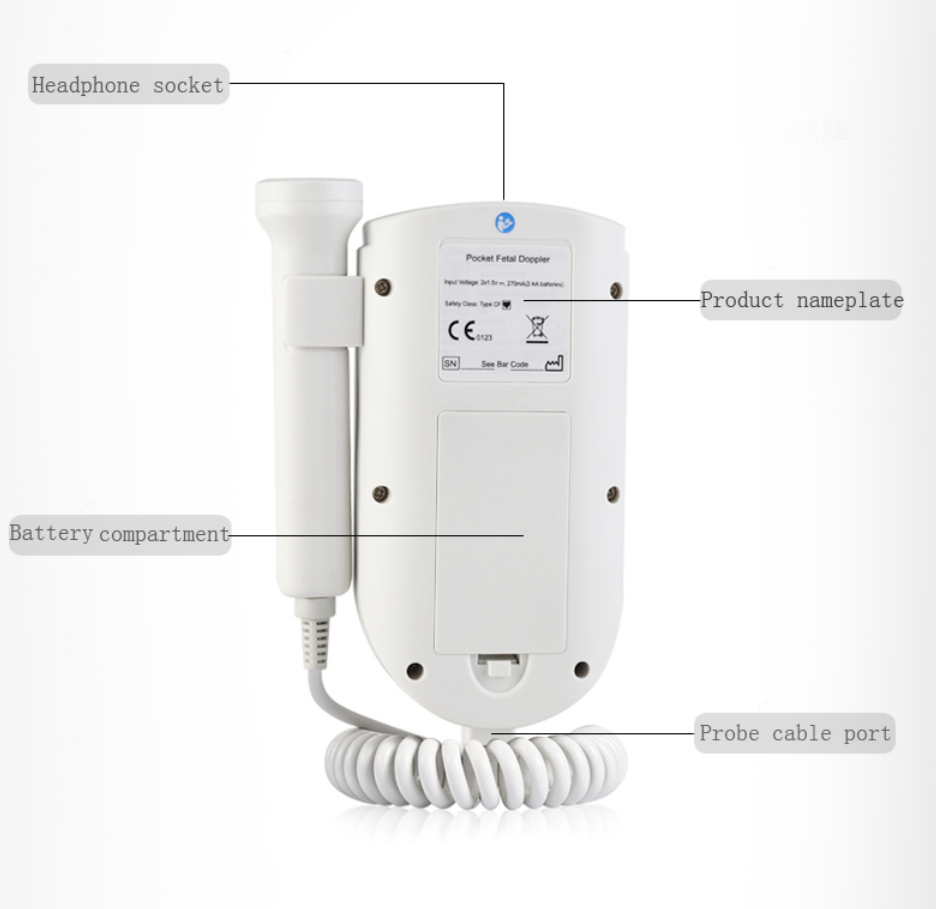A normal heart rate for a fetus can range from 110 to 160 beats per minute (BPM). Very early in pregnancy, it is typically around 110 BPM. Fetal heart rate may speed up to 140 to 170 BPM around the ninth week and slow to around 110 to 160 BPM thereafter.
Fetal heart rate can provide lots of information about your baby’s health during pregnancy. Healthcare providers usually start checking it at the 10- or 12-week prenatal visit. From there, providers generally do so during each prenatal appointment and while monitoring labor. Sonic Electric Toothbrush

This article reviews normal fetal heart rate, how it is measured, who should monitor it, and what causes variations.
Healthcare providers measure fetal heart rate by the number of fetal (baby) heartbeats per minute (BPM) during pregnancy. This measurement helps healthcare providers determine the well-being of the fetus during prenatal visits or labor.
For most of your pregnancy, the fetal heart rate will average between 110 and 160 BPM.
The average fetal heart rate varies depending on the stage of pregnancy. Here's generally what to expect:
Fetal heart rate can vary throughout the day and night by as much as five to 25 beats per minute. This is due to a fetus's activity level.
The heart rate increases while they are moving around and decreases while they're asleep. These changes are similar to what adults experience while exercising or at rest.
Weeks 10 to 12 are typically when a fetus's heartbeat can be heard for the first time during a prenatal visit.
An abnormal fetal heart rate is one that is either too fast or two slow.
Bradycardia is when the fetal heart rate is slower than 110 BPM. This is very uncommon and usually temporary.
Bradycardia that persists can indicate a problem such as fetal distress or a problem with the way electrical signals are transmitted in the heart.
Most of the time, fetal bradycardia doesn't need to be treated. Sometimes, however, it will require interventions like medication or early delivery.
Tachycardia is when the fetal heart rate is faster than 160 BPM. It is uncommon and usually temporary. If your fetus experiences tachycardia for a long period of time or it happens more than once or twice, it could indicate a problem such as fetal distress or infection.
Tachycardia may resolve on its own, or it may be treated with medication to help lower the heart rate. If you are not in labor, you may need to stay in the hospital for monitoring to see how the fetus responds to the medication.
Sometimes, babies that experience tachycardia need follow-up care after they are born.
Sometimes a fetal heart rate is outside the normal range simply because the fetus is moving around. Other times, it indicates a health concern for the baby.
Depending on the stage of pregnancy, different tests will be used to clarify the reason for the abnormal heart rate.
This may have to do with something happening in the mother’s body. These are called maternal causes and may include:
There are two different ways to check fetal heart rate: external monitoring and internal monitoring.
External monitoring means checking the fetal heart rate through the mother’s belly. The Doppler machine is an example of external monitoring and can be used during prenatal visits or labor.
Healthcare providers may also use continuous external electronic monitoring during labor. They secure external sensors to the abdomen with an elastic belt or an electrode that resembles a round sticker. The fetal heart rate and contraction information appear on an attached computer screen.
Fetal heart rate monitoring during labor help healthcare providers watch how a fetus responds to contractions, medications, tests, and pushing.
Internal monitoring involves a thin wire and electrode placed through the cervix and attached to the baby's scalp. This technique is considered only after a mother's water has broken and the cervix is dilated or open.
It provides more precise readings that are not affected by the baby’s movement.
A stethoscope or doppler machine can be used by anyone after 20 or 22 weeks of pregnancy. However, it can take some practice to hear the heartbeat using this method, especially if the fetus is moving around.
As such, fetal heart rate checks are best left to qualified medical professionals.
Occasional use of Dopplers by a healthcare provider is considered safe. However, use of over-the-counter handheld fetal Dopplers can have negative consequences. For example:
A fetal heart rate gives you and your healthcare team information about your baby’s health during pregnancy. Healthcare providers usually start listening for a baby’s heart rate at the 10- to 12-week prenatal visit using a Doppler machine. They continue to monitor it during prenatal appointments and during labor.
Normal variations in fetal heart rate occur when the baby is moving or asleep. While it is not always a cause for concern, fetal heart rates outside the normal range may also indicate fetal distress. It provides your healthcare team with information so they can intervene, if necessary.
A fetal heart rate greater than 160 beats per minute (BPM) is considered fast. It is called fetal tachycardia when it is greater than 160 to 180 BPM.
This depends on the source and duration of your increased heart rate. Mild to moderate heart rate changes in otherwise healthy women generally do not negatively affect the baby’s heart rate. However, prolonged anxiety, stress, and high blood pressure could negatively affect your baby’s health.
The fetal heart rate acts as a screening tool for the healthcare team. A prenatal non-stress test (NST) can be used to assess fetal heart rate and movement at around at 28 weeks of gestation until delivery. If the heart rate is out of the normal range, the team can do an ultrasound or order blood work. During labor, they may give the mother oxygen or change her position to see if that helps the baby or if they need to intervene.
The American College of Obstetrics and Gynecologists. Fetal heart rate monitoring during labor.
American Pregnancy Association. Early fetal development.
American Pregnancy Association. Early fetal development.
Ayres-de-Campos D, Spong C, Chandraharan E. FIGO consensus guidelines on intrapartum fetal monitoring: Cardiotocography. Int J Gynecol Obstet. 2015;131(1):13-24. doi:10.1016/j.ijgo.2015.06.019.
Johns Hopkins Medicine. Fetal heart monitoring.
MedlinePlus. Prenatal care in your first trimester.
Ghenbot R, Gonzalez-Brown V, Markham K. Management of fetal supraventricular tachycardia: three cases at a single institution. Obstet Gynecol Cases Rev. 2019;6:146. doi:10.23937/2377-9004/1410146
UT Southwestern Medical Center. What happens if my prenatal doctor hears a fetal heart arrhythmia?
National Library of Medicine. MedlinePlus. Fetal development.
U.S. Food and Drug Administration. Avoid fetal "keepsake" images, heartbeat monitors.
Blaize AN, Pearson KJ, Newcomer SC. Impact of maternal exercise during pregnancy on offspring chronic disease susceptibility. Exerc Sport Sci Rev. 2015;43(4):198-203. doi:10.1249/JES.0000000000000058.
By Brandi Jones, MSN-ED RN-BC Brandi is a nurse and the owner of Brandi Jones LLC. She specializes in health and wellness writing including blogs, articles, and education.
Thank you, {{form.email}}, for signing up.
There was an error. Please try again.

Full Automatic Blood Pressure Monitor By clicking “Accept All Cookies”, you agree to the storing of cookies on your device to enhance site navigation, analyze site usage, and assist in our marketing efforts.
